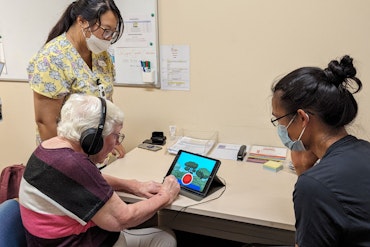Aged care safety set to improve through coming trials
Between independent reviews and co-design sessions over the past two years, the Quality Standards have adjusted to reflect public expectations for aged care.

After speaking with the public, the Department of Health and Aged Care releases a report highlighting what they found. (Source: Shutterstock)
Key points:
- The six-week public discussion surrounding Aged Care Quality Standards will be used for upcoming trials
- The Department believes the new Review of the Aged Care Quality Standards Consultation Summary Report will strengthen procedure across the next few months
- The Quality Standards were launched in 2019 as the new guidelines for aged care services
Since 2021, the Government has sought public feedback on Quality Standards for the Royal Commission into Aged Care Quality and Safety, which was established in October of 2018.
The latest Review, published at the end of May was the result of 1,000 survey responses and 900 focus group attendees, giving their thoughts on what needed to change as the Quality Standards improve. In particular, the public wanted changes to reflect: diversity, cultural safety, person-centred care and specialised care.
Right now, aged care providers are reviewed against the Quality Standards periodically, to keep those receiving care safe and to ensure the public knows if there are any issues:
Standard one
- The person
What people want to see change:
The public says that definitions need to be put into place to prove there are targets which can be met, rather than vague promises.
Standard two
- The organisation
What people want to see change:
People want an improved management system for complaints, along with more accountability for providers who have complaints filed against them. As a result, the strengthened Quality Standard will be addressed through increased training and pay for staff, along with checks and balances for complaints.
Standard three
- Care and services
What people want to see change:
The public were uncertain about the distinction between dementia care and how much red tape separates aged care services. As a result, the Commission is looking to streamline services and strengthen how different service providers, professionals, families and carers work together to save time.
Standard four
- The care environment
What people want to see change:
There were concerns from the public about the ability to address and screen risks before they happen, which the Commission will seek to model Quality Standard changes around — in particular, what constitutes ‘safe’ and ‘dementia care’ environments.
Standard five
- Clinical care
What people want to see change:
The need to distinguish between in-home care and residential care was a big point of contention for the public, which was addressed and acknowledged by the Commission in the Summary Report. There will be more detailed concepts for the use of allied health and medical professionals, plus the safe and quality use of medicines
Standard six
- Food and nutrition
What people want to see change:
The public expressed concern about food and nutrition in aged care, but the Commission is looking to incorporate these fears into a new standard for food presentation and menu options, including referring to dieticians when adjustments are made.
Standard seven
- Residential community
What people want to see change:
Public feedback was mixed surrounding existing guidelines for hobbies and curing boredom in aged care residential facilities, as some thought it needed to be more specific and others thought that simplicity was a good thing, given people’s varying interests and willingness to engage. The Government is looking at strengthening the role communication plays, specifically in the transition from healthcare to aged care.
Over the next few months, the above changes will be rolled out for an initial pilot trial to see what works and use that to inform the future of aged care. What do you think about the up coming adjustments and what would you like to see tweaked? Let us know on the Talking Aged Care Facebook page.























